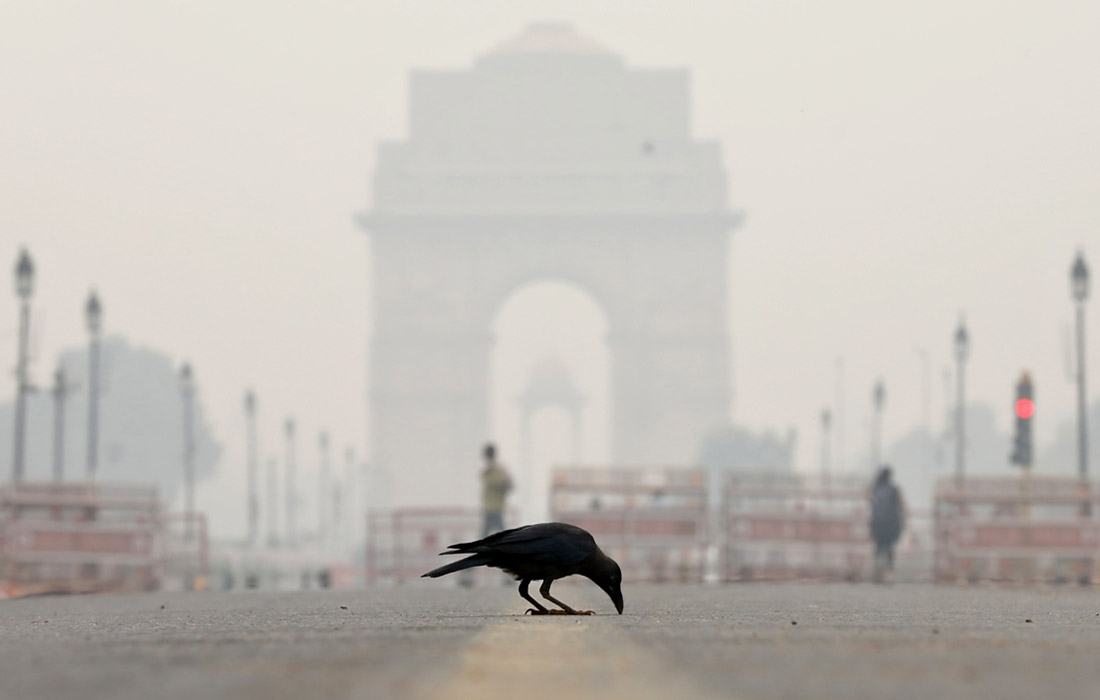Understanding Air Pollution in India
Air pollution in India has emerged as a significant environmental concern, posing serious threats to public health and the ecosystem. The primary causes of this issue can be attributed to a myriad of factors, including rapid urbanization, industrial emissions, vehicular exhaust, and agricultural practices. Each of these elements contributes uniquely to the deterioration of air quality across various regions.
Urbanization plays a critical role in air pollution in India, as the migration of populations to cities leads to a surge in construction activities and increased demand for energy. This urban sprawl results in higher emissions from industries that often prioritize profit over environmental considerations. Furthermore, urban areas are characterized by high traffic volumes, which exacerbate air pollution levels. The exhaust from vehicles, particularly in metropolitan cities, contains harmful pollutants such as nitrogen oxides and particulate matter that significantly diminish air quality.
Industrial emissions are another significant contributor to air pollution. Many factories release high levels of sulfur dioxide, carbon monoxide, and volatile organic compounds into the atmosphere. While regulatory measures exist, enforcement is often lax, leading to continued emissions that compromise air quality. Agricultural activities also add to this complex problem, as practices such as the burning of crop residues contribute to particulate matter in the air.
Geographical features and seasonal variations further complicate the air pollution scenario. For instance, the geography of certain areas can trap pollutants, preventing their dispersion and leading to smog formation. Seasonal fluctuations, particularly during winter months, can lead to poor air quality conditions as temperature inversions trap polluted air close to the ground. Understanding these interconnected causes and contributors is essential in addressing the critical air pollution levels in India.
Health Impacts of Air Pollution
Air pollution in India poses a significant threat to public health, with various studies indicating a strong correlation between exposure to polluted air and an array of health complications. Fine particulate matter, specifically PM2.5 and PM10, as well as nitrogen dioxide (NO2) and other hazardous substances, are prevalent in many urban areas. Research has consistently shown that these pollutants can lead to severe respiratory diseases, including asthma, chronic bronchitis, and even lung cancer. According to the World Health Organization, approximately 1.7 million premature deaths in India can be attributed to air pollution annually, underscoring the urgency of this public health crisis.
The respiratory system is particularly vulnerable to the adverse effects of air pollutants. When inhaled, particulate matter can penetrate deep into lung tissues, while NO2 can exacerbate conditions such as asthma. Studies have demonstrated that consistent exposure to these airborne toxins can lead to a decline in lung function, resulting in chronic respiratory diseases that often require long-term medical care. Furthermore, vulnerable populations, including children, individuals with pre-existing health conditions, and the elderly, are disproportionately affected, highlighting the need for targeted interventions.
In addition to respiratory ailments, air pollution has been linked to an increase in cardiovascular problems. The toxic substances in the air can enter the bloodstream, where they may contribute to heart disease, strokes, and other serious cardiovascular events. A recent study indicated that individuals living in areas with high pollution levels have a significantly higher risk of heart attacks compared to those in cleaner environments. These findings raise alarming questions about the long-term implications of air quality deterioration on the health of the population.
The health impacts of air pollution extend beyond immediate concerns, with researchers also noting potential effects on mental health and cognitive development. Children subjected to polluted air may experience developmental delays and cognitive impairments, further exacerbating the societal implications of this environmental issue. Addressing air pollution is not just an environmental necessity, but a critical public health imperative that demands immediate attention.
Government Response and Policies
The Indian government has recognized air pollution as a significant environmental issue and has initiated various measures to address this pressing concern. One of the most prominent strategies is the National Clean Air Program (NCAP), launched in 2019, which aims to tackle the rising levels of air pollution across the country. The program sets forth a comprehensive framework to reduce particulate matter and other harmful pollutants in the air, focusing on both urban and rural areas.
Under the NCAP, the government has established a target of reducing particulate matter concentrations by 20% to 30% by 2024, relative to the 2017 levels. This initiative emphasizes a multi-faceted approach, involving local authorities, state governments, and various stakeholders to implement effective policies that can ensure adherence to air quality standards. The NCAP also aims to strengthen monitoring networks, enhance public awareness campaigns, and promote research and development in air quality management.
In addition to the NCAP, several laws and regulations have been enacted to combat air pollution. The Air (Prevention and Control of Pollution) Act, 1981, empowers state pollution control boards to enforce compliance with air quality standards and manage industrial emissions. The government has also deployed stricter emissions norms for industries and vehicles, encouraging the adoption of cleaner technologies through incentives and subsidies.
Despite these initiatives, challenges remain in the effective implementation of air quality regulations. Issues such as insufficient monitoring infrastructure, lack of public awareness, and inadequate enforcement mechanisms have hindered progress. Local and state governments play a crucial role in this regard, as they are responsible for ensuring compliance with air quality standards and addressing pollution hotspots. As collaborations intensify between various levels of government and stakeholders, there is potential for more effective action to mitigate air pollution in India.
Community Efforts and Solutions to Combat Air Pollution
In recent years, communities across India have embarked on significant initiatives aimed at addressing the alarming levels of air pollution that plague urban areas. These grassroots movements are essential as they tap into local knowledge and foster a sense of collective responsibility for the environment. One notable example is the ‘Clean Air Campaign’ in Delhi, which encourages citizens to reduce vehicular emissions and promote carpooling. By collaborating with local government and NGOs, residents are empowered to undertake measures that lead to improved air quality.
Public awareness campaigns have become a powerful tool in combating air pollution. Many organizations are actively involved in educating citizens about the health impacts of polluted air, thus inspiring them to adopt greener habits such as using public transportation or biking. For instance, the ‘Cycle for Change’ initiative aims to promote cycling as a viable mode of transport, reducing reliance on fossil fuel-powered vehicles. This has not only made the air cleaner but has also been linked to improved physical health among participants.
Moreover, innovative solutions involving green technologies are gaining traction. Cities like Pune have implemented air purification systems in public areas, demonstrating a successful intersection of technology and community effort. The integration of affordable electric vehicles into local transport services has also shown promise in reducing harmful emissions. Engaging citizens in these practices ensures a sense of ownership over the air quality in their neighborhoods, making pollution reduction a shared goal.
In addition, the role of non-governmental organizations (NGOs) and activists cannot be underestimated. They play a crucial role in advocating for sustainable practices and influencing policy changes. Through community workshops, they educate individuals on methods to reduce pollution at home and encourage local action groups to take the initiative. Through collective efforts, public engagement, and innovative solutions, communities are rising to the challenge and making substantial strides toward combating air pollution in India.

